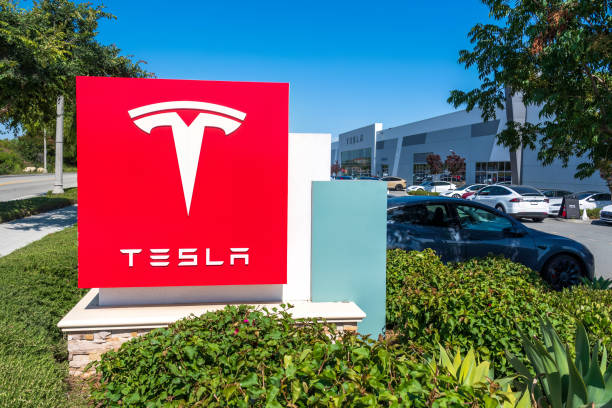Tesla's Sales Slump Deepens as Musk Focuses on Robots and Pay Package

While Elon Musk has been preoccupied with Tesla's robotics division and securing his landmark $1 trillion compensation package, the automaker's core business—selling vehicles—faces a worsening outlook.
Tesla is now confronting sales pressure across the world's three major automotive markets: Europe, China, and the United States. In Europe, the company's October sales plummeted 48.5% year-over-year, according to data released Tuesday. For the full year, Tesla’s sales in the region are down approximately 30%, even as overall EV sales across the industry climbed 26%.
Globally, Tesla’s vehicle deliveries are projected to fall 7% this year, following a 1% decline in 2024. This comes despite a record third quarter, when U.S. buyers rushed to take advantage of an expiring federal EV tax credit.
The steep European decline suggests Tesla has not recovered from the sales turbulence that began late last year, when Musk’s public endorsement of far-right figures sparked regional protests. While Musk has recently tempered his political remarks, Tesla’s performance in Europe continues to deteriorate—pointing to deeper operational issues.
As recently as 2023, Tesla’s Model Y was the world’s best-selling vehicle. But the company has since slipped down the rankings as rivals roll out more varied and competitively priced EV lineups, while Tesla’s own models have aged without significant updates.
Volkswagen Overtakes Tesla in European EV Sales
Tesla’s challenges are particularly pronounced in Europe, where more than a dozen electric models now sell for under $30,000. The market is also seeing an influx of Chinese automakers offering a wider selection of EVs, hybrids, and gasoline vehicles.
Analysts see no easy fix for Tesla in Europe, where it sells only two mass-market models. In response, Tesla recently launched a lower-priced, stripped-down version of the Model Y.
Meanwhile, competitors are expanding their offerings. In the U.K. alone, more than 150 electric models are now available. At least 50 new EVs are expected to launch next year—none of them Teslas.
In a stark shift, China’s BYD sold 17,470 vehicles in Europe in October—more than double Tesla’s total. Volkswagen, once a laggard in the EV transition, posted a 78.2% surge in electric sales through September, reaching 522,600 units and tripling Tesla’s volume.
“The problem for Elon Musk is not just his own cars and the Chinese carmakers,” said Ferdinand Dudenhoeffer of the CAR Center for Automotive Research. “The problem is also that the Europeans have caught up.”
China and U.S. Prospects Also Dim
In China, Tesla’s sales and market share are also declining, though less sharply than in Europe. October deliveries fell 35.8% to a three-year low, with year-to-date sales down 8.4%. The company faces stiff competition from established Chinese brands like Chery and newcomers such as Xiaomi, whose YU7 model has quickly become a rival to the Model Y.
In the U.S., Tesla sales jumped 18% in September as shoppers raced to beat the tax credit deadline, but they fell 24% in October. Industry executives expect cooling demand ahead.
Some analysts suggest Tesla could benefit as legacy automakers including GM, Ford, and Honda scale back EV investments. The recent launch of cheaper Model Y and Model 3 variants—priced about $5,000 lower—may also help defend market share.
Yet many argue that Tesla needs a new mass-market vehicle to revive sales. So far, there is little sign of one in development, as Musk shifts focus toward self-driving robotaxis and humanoid robots.
Notably, Musk’s new compensation package does not hinge on a sales rebound. The CEO can still earn billions if Tesla averages 1.2 million annual vehicle sales over the next decade—roughly half a million fewer than it sold in 2024.
The above content was completed with the assistance of AI and has been reviewed by an editor.


